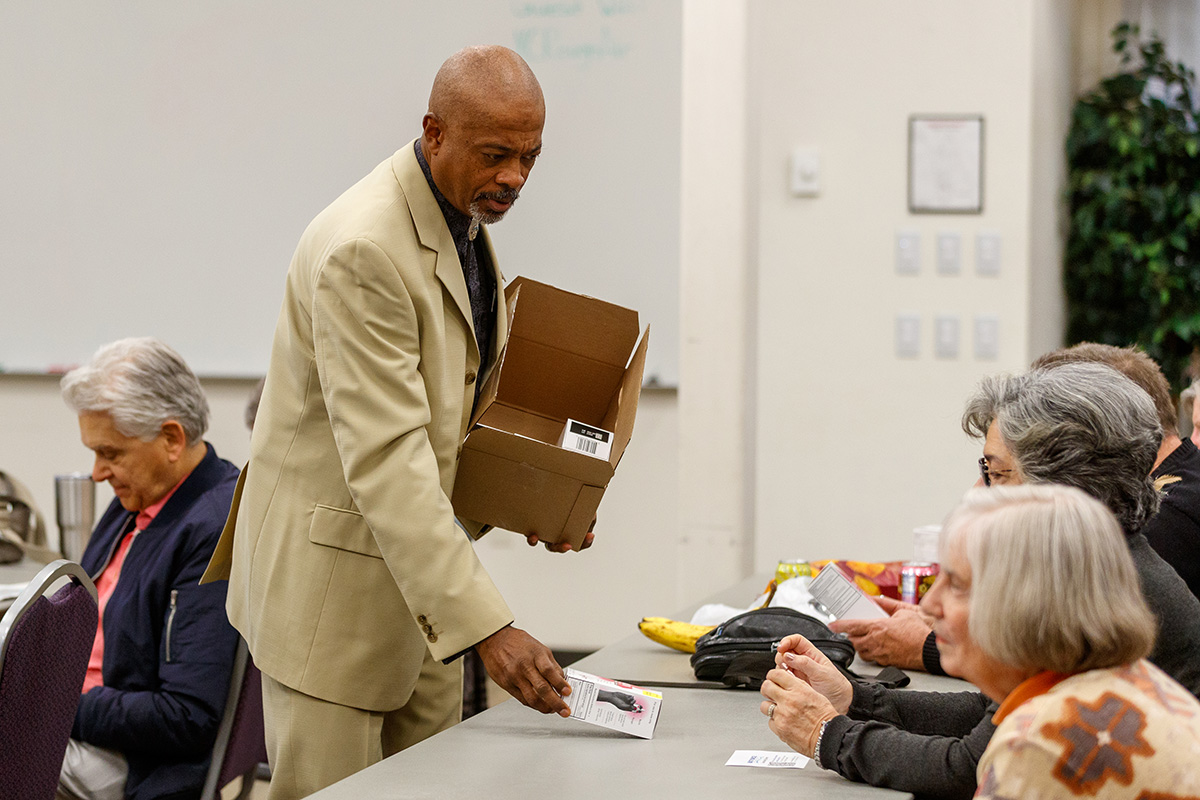
Bernard Plaskett, a facilitator with the Osher Lifelong Learning Institute and retired Las Vegas Police Department officer, and Nikki Rosson, an assistant director and program manager with MATForce, presented a lecture titled “Narcan and the Opioid Epidemic” as part of the OLLI Brown Bag Program at Yavapai College on Feb. 13.
A 2022 opioid overdose surveillance report released by the Arizona Department of Health Services found that the majority of opioid overdose deaths, 93.4%, were accidental. Of those, deaths were highest among individuals aged 25 to 34 years at 27.8% and individuals 35 to 44 years at 26.1%. The California Center of Excellence for Trauma-Informed Care pointed out in a 2019 study that reference to an “opioid epidemic” was misleading, since only opioid overdose deaths have increased rather than opioid use or abuse rates.
Rosson said that fentanyl is one of the most often seized drugs by police, and those seizures are increasing every year. The Drug Enforcement Administration seized over 78.4 million fentanyl-laced pills and almost 12,000 pounds of fentanyl powder in 2023. This is equivalent to over 388.8 million lethal doses of fentanyl.
So far in 2024, the current number of fentanyl seizures are equivalent to over 41.1 million lethal doses. Fentanyl is an opioid, a class of drugs used to reduce pain. It is used as both a prescription opioid and an illegal recreational drug. According to the Centers for Disease Control and Prevention, illicit synthetic fentanyl is 50 times stronger than heroin and 100 times stronger than morphine. Synthetic fentanyl is often pressed or mixed into counterfeit pills without the user’s knowledge.
Rosson said that fentanyl pills are often made to look like oxycodone but can come in many different shapes, sizes and colors and is sometimes mixed with more common drugs like Adderall and Xanax.
Rosson also shed light on the latest lethal illegal drug, “tranq,” which contains xylazine, an animal tranquilizer. She said that it’s commonly found in combination with fentanyl and other street drugs as an accelerant.
Plaskett offered tips on responding to overdoses. He said that when he was a police officer, his department had a mobile community engagement unit that went out into the community to cook hot dogs and allow residents to meet police. He said that this gained community trust and that arrest rates went up after going out with the community unit. He realized that the missing link was community, prompting him to link up with MATForce.
Plaskett also said that during training, he and other trainees took nasal Narcan to demonstrate its lack of negative effects if administered to someone not experiencing an opioid overdose. He argued everyone should keep it in their car or their medicine cabinet. Naloxone is available for purchase without a prescription at most major pharmacies.
Signs of an overdose include lack of responsiveness, slowed or absent breathing, making sounds like choking or gurgling, blue lips and nails, cold clammy skin and contracted pupils. Anyone who suspects an overdose should call 911 immediately, then check for responsiveness, either by shaking the person’s shoulders or performing a sternal rub. If naloxone is available, they should administer it. If the person is not breathing, they should begin CPR and place the person in the recovery position so that they cannot potentially choke on vomit once they start breathing again.
Plaskett also discussed the Arizona Good Samaritan Law, which provides that neither the overdose victim nor anyone who calls 911 or helps the victim will be charged for possession of substances.